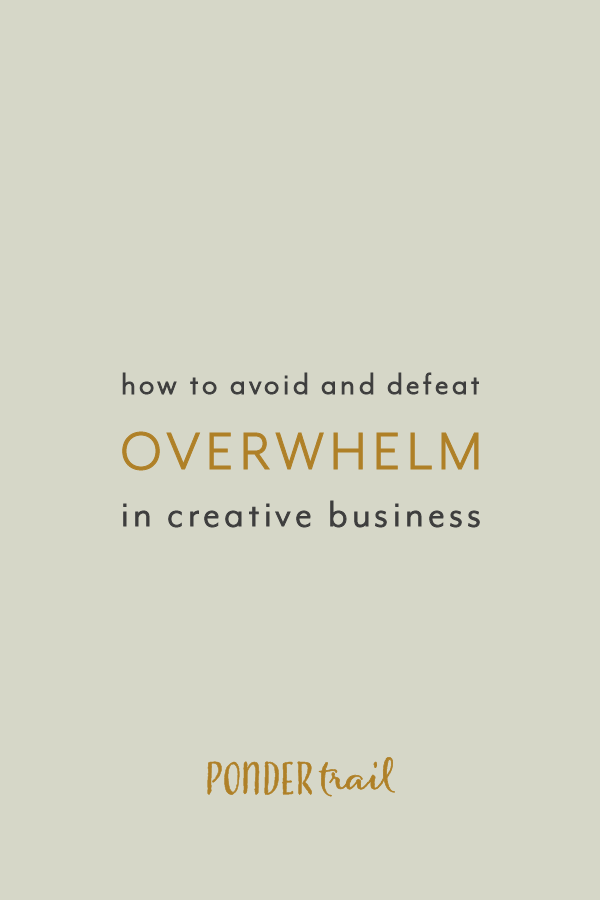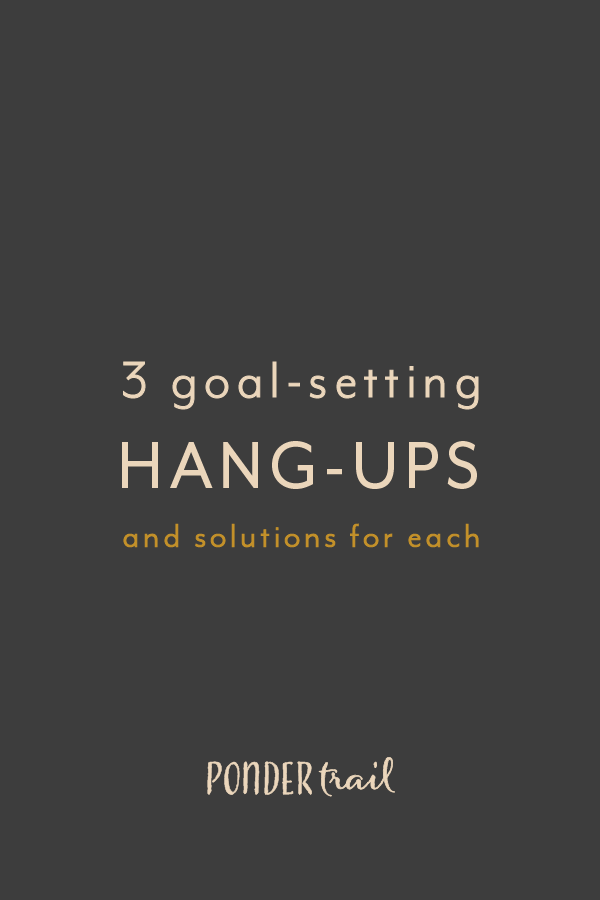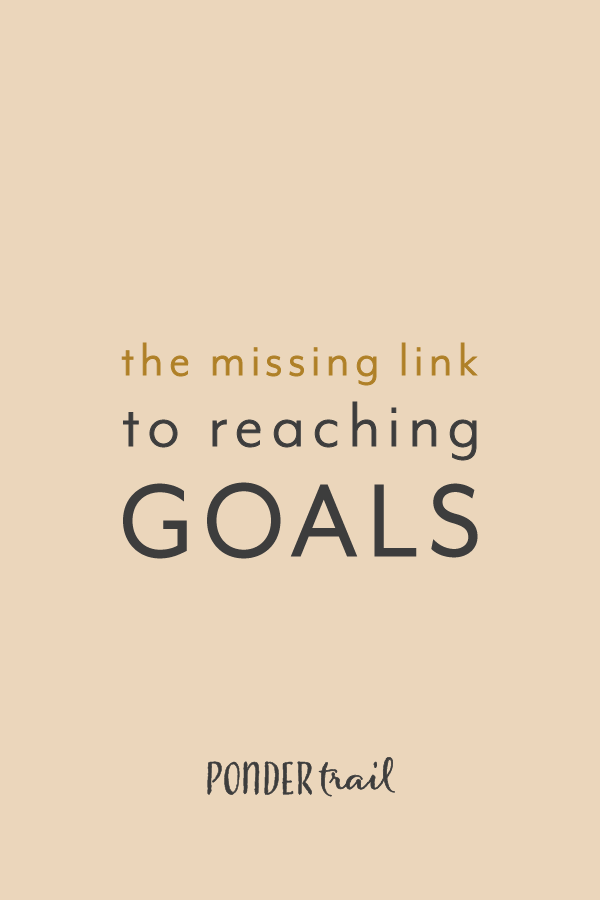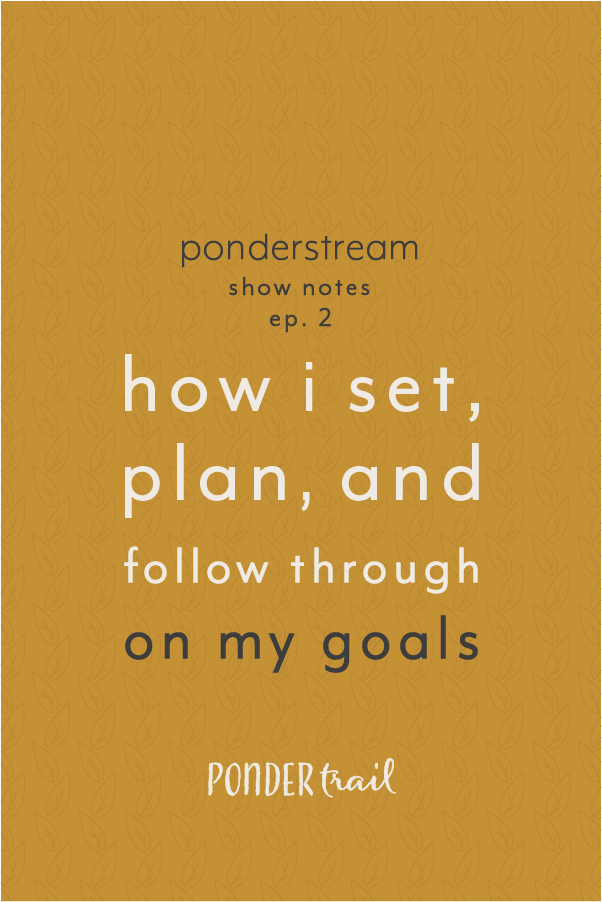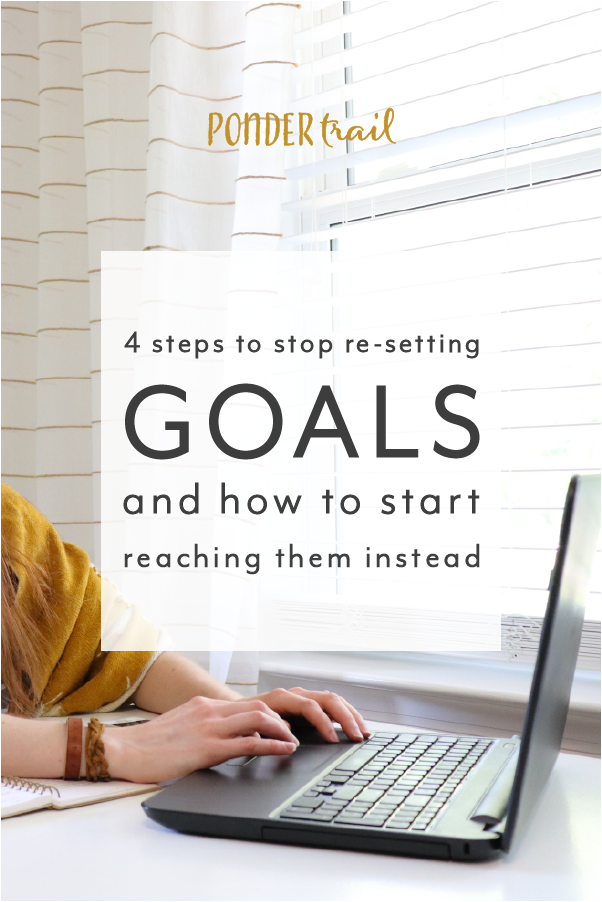4 Steps to Stop Re-Setting Goals and How to Start Reaching them Instead
Are you making headway on your goals? Are you staying on track? Or do you often find yourself missing the mark and rewriting the same goals at the top of next month’s planner pages . . . again?
In my last post, I talked about the simple missing link to reaching goals, and I explained why many goals always seem to get away from us or feel out of reach.
Today, I’m showing you how to apply that secret so you can finally break the cycle of pushing your goals into the future.
If you tend to rewrite the same to-do list week after week, these 4 simple steps will help you understand and overcome the common struggle that many creative entrepreneurs face: how to actually reach goals.
1 // List your current pitfalls.
The first step to break the cycle of transferring unmet goals to “next time” is to take a look at your current approach and figure out what needs to change.
Make a list of everything that keeps you from reaching a goal. Start by asking yourself the following questions:
Is it lack of motivation?
Failure to maintain a consistent schedule?
Low levels of productivity?
Overwhelm that keeps you from starting?
Unclear focus or direction of what to focus on?
Lack of know-how?
Create a running list so you can add to it whenever you notice a factor that’s getting in your way.
Once you have a clear understanding of what prevents you from scribbling those satisfying checkmarks, it’s time to move onto the next step.
Get my workbook for setting, planning, and reaching your goals:
2 // Organize your goals by the two types.
In my last blog post, I talked about the simple missing link to reaching goals. Since goals need different approaches to be tackled, organizing them helps you differentiate how to work towards them, and it ensures completion.
Distinguishing between the two types of goals makes it possible to spot the extra tricky ones that require an outreach or marketing strategy vs. the ones that don’t require anything beyond your ability to get tasks done.
Sort your goals into two distinct categories:
Internal goals — goals you can accomplish independently and without relying on external factors or reactions. They are met soly from your (or your team’s) actions. (Think: goals related to good habits, productivity, and routines.)
External goals — goals that depend on the actions (or reactions) of external people and factors. They are accomplished from a complex combination of strategies you put in place and how effectively they cause your audience (or potential audience) to take those specific steps that lead to the goals. (Think: goals related to bookings, sales, sign-ups, followers, revenue.)
The Key to Reaching Internal Goals
Internal goals need to be realistic and possible to reach. For example, if you set a goal for your blogging schedule, make sure you have enough hours to complete the tasks involved. Otherwise, the goal will be impossible to meet, and you will continue the cycle of transferring the goal to a future deadline. Over and over and over again.
Reaching internal goals is a matter of being honest with yourself about how much work you can actually handle and then creating a structure to help you work productively.
Focus on tasks that are effective rather than on “filler” tasks that eat away your time. (For example: writing and completing a blog post instead of checking your blog readership stats every half hour.)
Try to amp up your efficiency when it comes to working on your tasks. This will help you add more projects onto your plate (or allow you to enjoy more time off). We’ll cover this in more detail in the final step of this blog post.
Another way to increase your capacity with internal goals is to delegate tasks to an assistant or a member of your team.
Related post: How I Set, Plan, and Follow Through on My Goals
The Key to Reaching External Goals
Most of your goals, however, will be dependent on other people knowing about your business and taking part in some way. In other words, you’ll need an audience to sell products and services to.
So external goals can only be met when enough people complete their role in accomplishing the goal. This means you must first create a path that leads to the goals and a strategy that encourages your audience to take the steps involved. The steps might be a series of actions, or it might be one quick click.
Trouble is, the cause-and-effect that add up to external goals aren’t in your direct control. So setting and navigating them can be unclear.
And perhaps the worst part is that you can’t hope to reach these goals if your business isn’t known to the world (or at least to a few members of your target audience).
This is why many creative entrepreneurs find themselves missing the mark each month for goals centered around income, sales, and bookings. And these are often the most pivotal goals for a business—and the very ones that keep the lights on.
Breaking this cycle is the very reason why having an effective marketing strategy is so important. In fact, it’s the single key to making your external goals become a reality.
Since reaching our external goals is where most of us get stuck, let’s dive into creating a plan to reach them.
3 // Create a marketing strategy for your external goals.
Most small business owners have some sort of marketing in place. But just because you’re “marketing,” doesn’t mean you’re doing it in a way that will help you reach your goals. Instead, you need a strategy that is effective enough to bring in the sales or bookings you need.
Google defines marketing as, “the action or business of promoting and selling products or services, including market research and advertising.”
This fundamental step in running a business is where many creative entrepreneurs get caught in the endless pattern of resetting goals or deferring them to a future time.
Crunch the numbers.
Think about how many people you need to present your offering to, and keep conversion rates in mind. If you get your new product in front of 100 people, how many can you expect to make a purchase? 50? 10? 1? 3.5?
Do your industry research to determine average conversion rates for your niche. Then, calculate the number of people who need to know about your product in order to hit your goal. It doesn't hurt to add a buffer by marketing to a larger audience size than you think you’ll need—especially when you’re just getting started and still figuring out your target market.
Don’t forget to only factor in people who fit the criteria of your ideal audience; there’s nothing worse than putting time into getting your business in front of the wrong, uninterested eyes!
Map out the audience path.
Once you’ve crunched the numbers, it’s time to create a step-by-step path for your audience to walk through.
Outline all of the steps it will likely take for someone to either buy a product, inquire about your service, or sign up for your newsletter. If making a sale right off the bat seems a bit far-fetched, a newsletter is a great first step to foster a relationship with your audience.
Ultimately, guiding people towards your offerings—or to other touch-points with you and your brand--are the main paths to keep at the forefront of your marketing plan.
Your website’s design strategy should reflect this by stringing your pages and content together to encourage more of these actions to take place. A poorly designed website will easily turn people away.
When it comes to the steps, clicks, and reactions involved with reaching your external goals, the simpler the better: you want to get rid of as many barriers as possible between your audience and their final step of committing to your product or service.
Related post: Why and How to Define an Audience for your Business, Blog, and Social Media
Show the value, and get creative.
Write out thorough answers to questions that will help you build strategy into your marketing. Ask:
How can you show the value behind your product?
What are your best ideas for positioning your product or service and creating more excitement around it?
What angle will create the most leverage with encouraging people to make a purchase?
What stories can you share to engage your audience’s attention?
What points will ultimately make someone decide to invest their money into your service?
What unique features are you offering that no other business has?
Related post: How to Transform Your Service (or Course) into an Experience
Put your plan into play.
This is where having a specialized brand with a clearly defined audience is key: when you build an audience with a common interest or problem, many of them will likely be interested in what your business offers.
Don’t try to do everything for everyone because you’ll end up pleasing no one. Stick to creating content, products, and services that circle around your one-of-a-kind brand.
It’s also important to note that it’s always easier to launch an offering when you’ve already built an audience. But if you’re just starting out, don’t let this discourage you.
Instead, start growing your following as soon as possible, and prioritize it above everything else. The sooner you have a dedicated audience, the quicker you’ll be on your way to making sales and reaching your most critical goals.
A blog is a great way to grow a loyal customer and client base. By sharing relevant content consistently, you are able to build trust with your readers and demonstrate your expertise. A blog that fits seamlessly with your niche and specialization will attract the correct type of people who will be interested in your paid products and services.
It gives you the opportunity to highlight the value of your offerings and give your audience free value along the way. This is called content marketing, and it’s one of the best strategies to include in your marketing plan.
4 // Block out time to work on your goals.
The final step to reach your goals and break the cycle of transferring them to next month is to dedicate time to working on the action steps that lead to your goals.
Don’t just “work on your business;” work on very specific, predetermined tasks that will contribute to achieving your goals on time.
Create a schedule so you get into the habit of working productively during consistent days and times. Routines help you get in the zone, and they produce more focus.
A consistent schedule with a set number of hours each week also allows you to create realistic deadlines for your goals since you know how much time you have available to work with.
If you’re growing your business part-time while still working a full-time job, carve out consistent time on the weekends or evenings to ensure you’re making progress. Make sure you don’t set expectations that aren’t possible to meet—that will only lead to repeated disappointment. Instead, make the best use of the time that you do have by being strategic with every minute.
Related post: 3 Goal Setting Hang-Ups, and Solutions for Each
Brand Strategy Coaching
If you’re unsure of what to focus on in your business, I’d love to chat with you! Take a look at my Brand Strategy Coaching Service to see if you might be interested in working one-on-one with me to grow your business. My workshop is designed to create clarity so you can spend more time on pre-planned action steps and less time on figuring out what to do next. I’d love to hop on a free 30-minute consultation call with you to help pinpoint where you’re struggling.
So much goes into bringing a goal to fruition, and I hope you found these 4 steps helpful! Do you tend to reach your goals consistently, or do you fall behind more often than you like? I would love to know! What do you struggle with the most regarding goals? Leave me a comment below.






